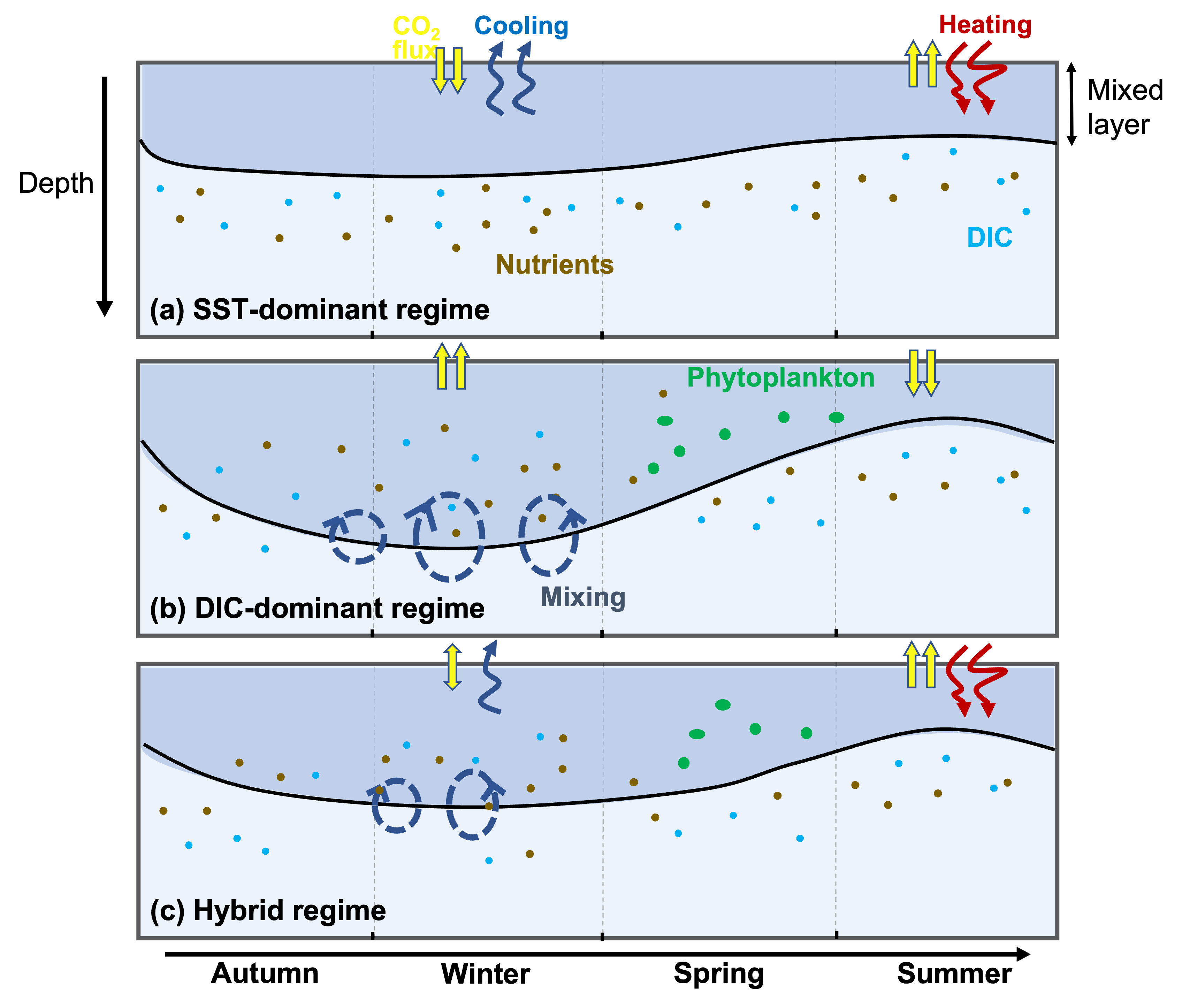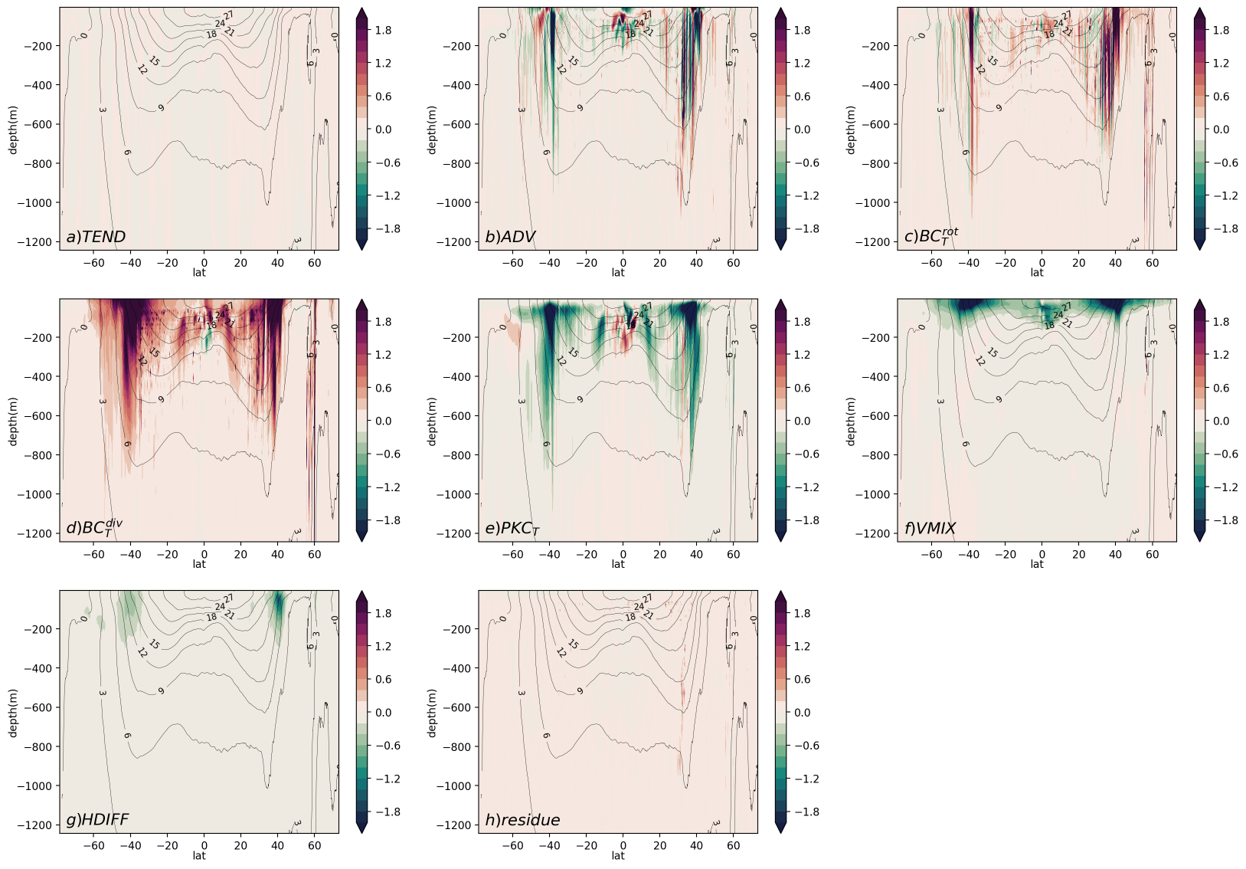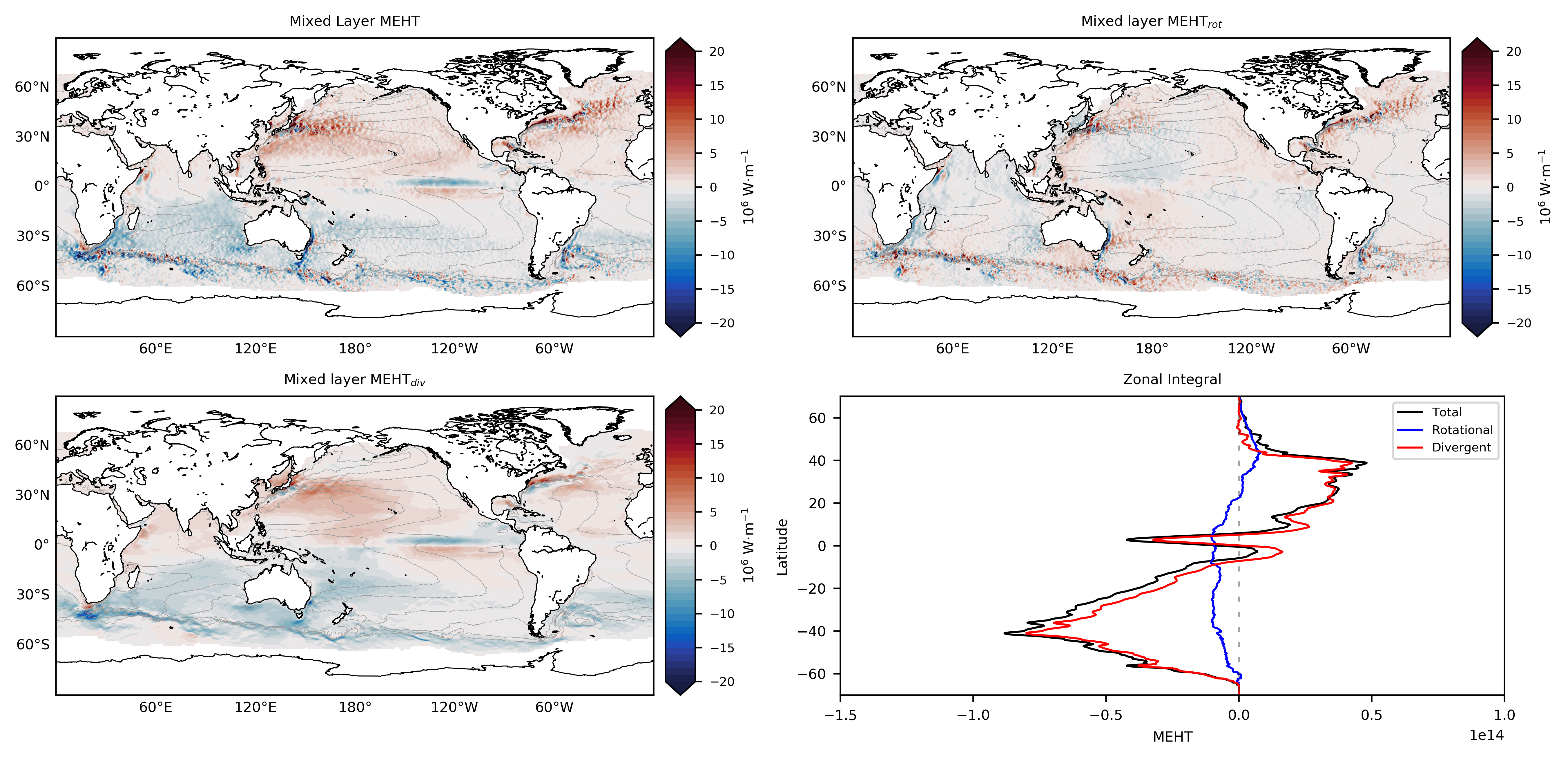I am an oceanographer studying ocean dynamic and biogeochemical processes using satellites, observations, and models. My research program can be organized into the following three research directions: (1) Ocean tracer transports and their variability; (2) Sources and sinks of ocean energy; and (3) Ocean carbon storage and uptake.
Ocean carbon storage and uptake
The oceans have a tremendous potential for capturing and storing atmospheric carbon dioxide (CO2). However, there is a limited understanding of the potential for increasing the oceans’ ability to capture and store anthropogenic carbon and its consequences for marine environments. My research objective is to examine a range of physical and biogeochemical (BGC) processes relevant to the ocean-based carbon removal approaches (e.g., mineral weathering, alkalinity enhancement). My work focuses on studying various ocean parameters including temperature and salinity, mixed-layer depth, regional circulation, ocean turbulence and mixing across different scales, and air-sea gas exchange. There are two steps for me to approach these objectives. First, I will investigate how ocean dynamics (e.g., mesoscale processes) influence carbon budget by analyzing synthesized observational data and eddy-resolving global BGC simulation. Second, I will utilize regional coupled model simulations to explore the feasibility of alkalinity addition for enhancing oceanic carbon uptake, with a specific focus on how regional physical processes, such as mesoscale eddies, submesoscale fronts, and coastal circulations, impact the efficiency of enhanced carbon capture after alkalinity addition. This research direction builds on my ongoing and future work that
- Characterizes different regimes controlling ocean surface pCO2 variability in the global ocean, highlighting the emergence of a unique hybrid regime in mid-latitude regions (Guo and Timmermans, 2023, JGR-oceans, under review).
- Demonstrates the significance of ocean mesoscale processes in governing ocean pCO2 variability and thus air-sea CO2 exchange, which is often overlooked in coupled climate models (Guo and Timmermans, 2023, in prep).
- Establishes a comprehensive pCO2 budget that incorporates temperature, dissolved inorganic carbon (DIC), salinity, and alkalinity equations to study the influence of various physical and BGC processes on pCO2 variability across different ocean regions.
- Develops coupled physical-biogeochemical modeling of the Northeast Atlantic Ocean to understand the feasibility of ocean alkalinity enhancement, along with field trial experiments.

Sources and sinks of ocean energy
Energy enters the ocean system at large scales through wind, buoyancy, and tidal forcing. A significant fraction of that energy is dissipated at small scales. As a key agent in the ocean energy cycle, mesoscale eddies can participate in energy transfer across scales and extract both potential and kinetic energy from the mean flow. My work aims to investigate the baroclinic and barotropic energy pathways in the global ocean to improve our understanding of eddy-mean flow interactions and the associated energy transfer. This will provide valuable insights that can guide ongoing development of new eddy parameterization schemes, with the aim of enhancing the performance of low-resolution climate models. This research direction builds on my past and ongoing work that
- Establishes an explicitly closed global EPE budget and points out a three-way balance for temperature variance equation in the global ocean (Guo et al., 2022, JPO).
- Analyzes the impact of mesoscale air-sea interactions on EPE generation and quantifies the contribution of this process to approximately 15% of the global EPE sink (Guo et al., 2022, JPO).
- Demonstrates the response of mesoscale transport and energetics to large-scale circulation shift in the Gulf Stream (Guo et al., 2023, GRL).

Ocean mesoscale tracer transports
The most energetic oceanic motions occur on the mesoscale, with lateral scales from tens to hundreds of kilometers. The ubiquitous mesoscale eddies are critical in the transports of heat, salt, dissolved carbon, and other tracers in all parts of the world’s oceans. My objective is to leverage these observations and models to develop frameworks to efficiently estimate the magnitude, spatial distribution, and temporal variations of mesoscale-induced tracer transports. This research direction builds on my past and ongoing work that estimates eddy heat transport within ocean mixed layer and its variability across various scales using decades-long satellite observations, ocean reanalysis, and high-resolution global climate models. Specifically, I
- Reconstructed ocean mixed-layer eddy heat transport and partitioned its dynamic and non-dynamic components through a Helmholtz decomposition in the global ocean (Guo and Bishop, 2022, JAMES).
- Evaluated the performance of a state-of-the-art high-resolution climate model in simulating ocean mesoscale variance and transport (Guo and Bishop, 2022, JAMES).
- Investigated the long-term evolution of eddy fields over the satellite record and discovered a significantly increasing trend in eddy-induced poleward transport (Guo et al., 2022, GRL).

